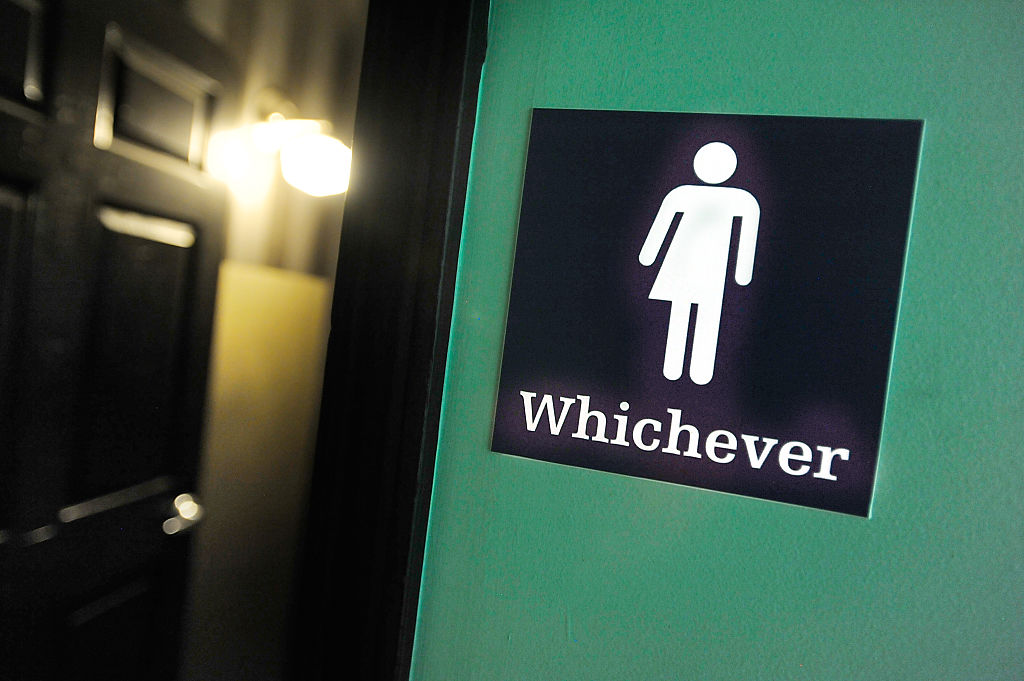Another week, another blast of evidence as to why putting kids on hormone blockers is an abomination. Time to Think: The Inside Story of the Collapse of the Tavistock’s Gender Service for Children by BBC journalist Hannah Barnes, which is released on 16 February, is dynamite. The revelations it contains are horrifying: former clinicians at the Gender Identity Development Service (GIDS), part of the Tavistock and Portman NHS Trust in London, detail how some children were placed on medication after one face-to-face assessment, despite many having mental health or family issues. More than a third of young people referred to the service had moderate to severe autistic traits, compared with under 2 per cent of children in the general population.
Much of the detail in the book has been known for some time, but has been denied, ignored or dismissed. Finally, action is being taken: the Tavistock clinic is due to close this Spring. But why did it take so long for this scandal to fully emerge?
As far as us feminists were concerned, this view of gender and sex looked like the most insidious type of sexism and promotion of 1950s gender roles
My own dealings with GIDS – and the backlash faced by those who have dared call into question the practice of giving kids hormone blockers – goes some way to explaining what has happened. Even back in 2003, when I first contacted the clinic, I was horrified by the approach to transparency. I was writing an investigative piece on the diagnosis of ‘transsexuality’ in relation to children. I explained the angle I was taking (critical and sceptical) and that I was hoping for a response from the service, refuting (I assumed) my allegations. Instead, I was sent on a wild goose chase, from clinician to clinician, and ended up speaking with an administrator who was spectacularly unhelpful.
I couldn’t quite believe the diagnosis made of trans people, which, in my view, effectively amounted to being ‘trapped in the wrong body’. As far as us feminists were concerned, this view of gender and sex looked like the most insidious type of sexism and promotion of 1950s gender roles. How could this perspective still be so prevalent so long after the women’s liberation movement had made its mark?
The ‘girls like pink, boys like blue’ sex stereotype nonsense should surely have been dead in the water by the turn of the millennium. But it seemed that some medical professionals who thought they knew best – and believed there is something like a ‘sexed brain’ – were keeping it alive and well.
Back in the 1980s, when I first encountered Claudia, who, as a gay man aged 26, was given irreversible cross-sex hormones – and underwent full sex change surgery two years later – it was plain to see that something was already wrong with the debate surrounding ‘transexuality’. When we met, Claudia told me that, despite ‘passing really well’ as a woman, they had always deeply regretted transitioning. ‘If only I had been supported to live in the body I had, I am certain I could have had a good life,’ Claudia said.
Today, there are many more people like Claudia who regret transitioning, and who feel their mental health problems were ignored when their condition was put in a neat box marked ‘gender dysphoria’. Some of these people will have passed through the doors of GIDS. As Barnes outlines in her book, when it comes to children arriving at the clinic, mental health issues were sometimes overlooked. As well as claiming to be trapped in the body of the opposite sex, some young patients claimed to be of a different ethnic background, such as Japanese or Korean. One young person had, as Barnes details, ‘three different alter egos, two of whom spoke in an Australian accent’.
It’s true that not everyone who worked at GIDS was happy with what was unfolding: some mental health professionals were deeply concerned with the medicalisation of children. They believed these children required talking therapies, not irreversible hormonal and surgical interventions. But these staff were in a difficult position: they were under pressure from ‘powerful lobbies’ to opt for medication, as a report from 2005 revealed:
‘…it is the consistent impression of a number of GIDU (Gender Identity Dysphoria Unit) staff that the service was coming under pressure to recommend the prescription of drugs more often and more quickly, and that the independence of professional judgement was also coming under increasing pressure. Young patients may threaten suicide if their anxieties are not immediately addressed. Parents and others may threaten to complain and there are powerful lobbies from older patients pressing for the use of medication, which even more worryingly, is now available without regulation via the internet. Clinicians will differ in their ability to resist the pressure to comply.’
Clinicians feared the consequences if they refused to comply with what patients, and their parents, wanted. Sonia Appleby, a former safeguarding lead, told Barnes that those who spoke out against the transition of children were ‘demonised’.
The resulting scandal is now plain to see: children damaged for life having been placed on medication that should not have been given to them. Some of those who worked at GIDS compare what unfolded at the clinic to the Mid Staffs hospital scandal of the 2000s, or the doping of East German athletes in the 1960s and 1970s. They’re right to do so – and it’s vital that lessons are learnt. If we fail to review what went so wrong, those that were instrumental in creating such devastation will be allowed to get away with it.







Comments